Popular on Food52
Continue After Advertisement
81 Comments
Maxine
May 18, 2019
I made rye sourdough yesterday. It came out very good. Next, I want to try whole wheat and another with spelt flours.
Kay F.
June 4, 2018
My starter is named ‘second job’ because I spend so much time with it. I wouldn’t have it any other way. Love the results!
Linda B.
October 18, 2017
jessbair, try equal parts starter, warm water and flour, by weight if you can, if not than the mixture you are already doing, let it sit out for 24 hours, stir it and let it sit out for another 24 hours. Do that for 3 days. You may have activity by then or not. If so feed it once more before using it. If there is no activity repeat the 3 day schedule. If you still have no action it is probably kaput.
jessbair
October 18, 2017
Thanks for your reply! So to clarify, you are saying to feed it every day for three days, right? Not just stir every day after the initial feed?
Also, today there are definitely bubbles on top but only 4-5, which doesn't seem as active as it has been in the past. I'm so stumped.
Also, today there are definitely bubbles on top but only 4-5, which doesn't seem as active as it has been in the past. I'm so stumped.
KThomas
October 18, 2017
I have not had a problem with mine and it is many years old at this point. To freshen it I get it out of the fridge and let it get to room temp, usually overnight. Then I freshen it and cover with a paper towel and rubber band and sit it on the counter or outside if the weather is good and let it do it's thing for a day. I also use buttermilk or regular milk if I have it instead of water. I think it makes a thicker more consistent start. I found that secret in an old sourdough cookbook that was written in the early 1900's.
jessbair
October 18, 2017
Thank you for replying! Buttermilk sounds really yummy, if I get it going I'll try that!
jessbair
October 18, 2017
Hi sourdough friends! I need some help troubleshooting, please! I have a starter I've been feeding and maintaining for a year or so. The first 6-8 loaves were wonderful but every one since has been flat and not worth eating. I didn't change anything, so I'm not sure what's going on. Also I had the starter in the fridge for a few months after having a baby and just recently got it out and am tryi to revive it. The first day or two it was looking a little bubbly but now, a week later (feeding twice a day, 1/2 cup starter, 4 oz filtered water, 4 oz all purpose flour) it just looks like paste, few to no bubbles. What did I do wrong? And is it even still alive? Argh.
Linda B.
October 15, 2017
Here's a tip for preserving your starter requiring no maintenance whatsoever. I've had friends ask me for some of my San Francisco starter that I captured on my back deck. I was faced with the dilemma of how to get it across country without it dying along the way or spending a fortune to overnight it and still risk having the recipient open the box only to find "The Blob" inside after it escaped its container en route so.....I tried dehydrating some. I simply spread some out on a piece of plastic wrap stretched over a cookie sheet and let it dry. Once it was completely dry I pulverized it with a rolling pin, put it in a plastic container for a month as a test and rehydrated it. I just added water to cover and let it sit for 24 hours. At that point it was soup. I added equal parts flour and water BY WEIGHT NOT VOLUME and again let it sit for 24 hours. It took 4 such feedings before it was back to a bubbly concoction and was ready to go.
I now keep a back up stash in case something dreadful happens and I lose my mother starter. I've rehydrated some that was 6 months old but it did require a few more feedings.
Of course this is only meant to be a way of preserving a bit of your starter should you not plan to bake for a while and don't want to bother with feedings or if, as in my case, you are afraid of losing your starter and want to have a back up.
I now just spoon out a bit of the dehydrated starter, place it in a plastic baggie and it's ready to go off to another happy baker.
I noticed a couple of comments about volume vs weight when measuring the feeding ingredients. You want weight. If you don't have a scale get one. You can't make consistently great bread, or I suppose consistently awful bread for that matter, without one.
I now keep a back up stash in case something dreadful happens and I lose my mother starter. I've rehydrated some that was 6 months old but it did require a few more feedings.
Of course this is only meant to be a way of preserving a bit of your starter should you not plan to bake for a while and don't want to bother with feedings or if, as in my case, you are afraid of losing your starter and want to have a back up.
I now just spoon out a bit of the dehydrated starter, place it in a plastic baggie and it's ready to go off to another happy baker.
I noticed a couple of comments about volume vs weight when measuring the feeding ingredients. You want weight. If you don't have a scale get one. You can't make consistently great bread, or I suppose consistently awful bread for that matter, without one.
abbyarnold
March 26, 2017
Also know that you don't need to feed it so regularly---I have revived starter after months in the fridge.
abbyarnold
March 26, 2017
Oh you have stumbled on the dilemma! Easiest thing is to mix some additional flour and salt, roll out flat, cut into crackers, and bake. Homemade crackers are fabulous and easy, and they use up the extra starter.
Lazyretirementgirl
March 26, 2017
As. Sourdough neophyte, I have a practical question. What to do with all the discarded starter? I am afraid to put it down the garbage disposal, thinking about flour + water = glue. Also, as the daughter of a ninety something who grew up in the ozarks during the Great Depression, it pains me to throw it out. All suggestions most welcome.
Mary M.
October 16, 2017
You probably have an answer by now, but, no pouring it down the drain is not a good idea. If your sink smells funky from the bits if starter washed down it, a cup or so of baking soda followed by very hot water works wonders. As for what else to do: as someone said, making crackers is an option. Me, I mix it into my compost. Hope you are enjoying your sourdough.
Laura415
November 1, 2015
Just finished making a sprouted spelt flour sourdough starter. That was a mouthful:)
Maybe I'm weird but to maintain my starter I just measure 1/4 cup of the old starter and add 1/4 cup water and 2oz spelt flour into a fresh mason jar. Four oz. of flour each feeding seems like a lot of flour just to maintain. When I want to use the starter then I feed it daily with the 4 oz. flour and 4 oz water until it grows to the amount of starter needed.
I've been trying to figure out how to sub in sourdough starter in bread recipes calling for yeast. So far the best ratio for subbing starter for yeast is 1 cup starter for each teaspoon of yeast called for. Reduce the liquid called for by 1/2 cup for each cup of starter used. This works great for my favorite sandwich bread recipe that calls for yeast.
Maybe I'm weird but to maintain my starter I just measure 1/4 cup of the old starter and add 1/4 cup water and 2oz spelt flour into a fresh mason jar. Four oz. of flour each feeding seems like a lot of flour just to maintain. When I want to use the starter then I feed it daily with the 4 oz. flour and 4 oz water until it grows to the amount of starter needed.
I've been trying to figure out how to sub in sourdough starter in bread recipes calling for yeast. So far the best ratio for subbing starter for yeast is 1 cup starter for each teaspoon of yeast called for. Reduce the liquid called for by 1/2 cup for each cup of starter used. This works great for my favorite sandwich bread recipe that calls for yeast.
Decibel P.
October 19, 2015
Back in the 70s I captured wild yeasts from the air for my own Providence, RI sourdough culture. My college roommate and I baked breads for our food co-op: sourdough, braided pumpernickel/wheat/unbleached white and more. We took over 5 or 6 ovens around town and baked 20-25 loaves, riding between ovens in a VW bus.
Christine M.
February 22, 2015
I'm working on my first sourdough starter. I've done everything these instructions say. But rather than looking like a dough in these photos, it's more of a liquid. I've measured four ounces of flour and water every time. My first thought is to add more flour but this says not to. Any experience with this before? Thanks! :)
Jeff P.
March 1, 2015
Make sure you're distinguishing between weight and fluid ounces. I've been confused about which measuring system to use in some recipes. In this case, fluid ounces for water, but weigh the flour on a kitchen scale. If you don't have one, it's roughly double the amount (e.g., 8 "fluid" ounces of flour) Good luck!
meet Y.
July 19, 2014
Has anyone had trouble using tap water to feed a starter? I had a friend of mine who had trouble maintaining his and thought it may be due to the treated tap water in our area? Thoughts?
trampledbygeese
July 19, 2014
Absolutely. Especially city water. To make the water system safe, some cities add antibacterial, antimicrobial, and other anti-blablabla stuff to the water. What's more, this often changes during the year, so water that worked in the winter, may kill the start in the summer. Every city is different, and given how large these water systems are, it's generally a good thing that they do this - even if it does play marry heck on one's fermented foods. One solution is to boil the water then leave out on the counter until cool. This gets rid of many of the chemicals that bother sourdough. A second choice would be to try distilled water, however, Sourdough doesn't always thrive on this as it seems to want minerals or something from normal water. Third choice would be to beg some water from a friend with a (tested) well. Some natural, agricultural, or industrial additives can seep into well water and also damage the starter, best to get the water tested every so often to find out if this is a problem in that area. Let us know what your friend tries and how it goes. Failing that, maybe it's the flour - sometimes things are added to flour to extend the shelf life or to substitute nutrition. Using whole grain (not just whole wheat) flour in the starter could make all the difference.
meet Y.
March 27, 2017
Thanks! We keep distilled around for plants, so I am planning on experimenting... Will report back!
Jersey G.
April 8, 2020
I am just learning about making my own yeast! My question is this, how much do you use when following a recipe? The recipes usually say 2 packets of yeast, well how much of my starter, do I use? Thanks!
abbyarnold
November 7, 2013
Jo, the proportions don't matter. The starter just needs some flour and water as nutrition. Try it and you will see! Whatever proportions you keep, and you don't need to be precise, will be absorbed when you make your bread, which is basically a giant starter with some salt. Trust me, starters are very hearty! Think about those explorers who hauled a bit of starter with them when they traveled by horse from Ohio to Oregon, or up to Alaska. My starter is a mix of my friend Melissa's family starter, some of the King Arthur, and whatever spores were picked up when the giant Pioneer Bakery was still operating two blocks from my house. I have at times ignored it for close to a year with no consequences--it is a real Rip Van Winkle. For me, the most difficult part of sourdough baking is getting a good crust. I am now experimenting with bricks on my gas BBQ to get a 500 degree oven with a humid environment.
Jo
November 6, 2013
My starter came from King Arthur Flour Co and recommends 4 oz warm water and 1 c unbleached all purpose flour. Why the difference between this and 4 oz or 1c each in comments below? I am an amateur but would really like to make different artisan breads.
mayK
August 28, 2013
I have rye-, whole wheat- and a white sourdoug always in the refrigirator and " feed" them once a week , usually when I'm baking a sourdough bread. It's almost a weekly ritual..
But really one of the best is making yeast-water of two green apples and water and made some really nice levain bread. It's an almost magical who easy it can be done... :)
But really one of the best is making yeast-water of two green apples and water and made some really nice levain bread. It's an almost magical who easy it can be done... :)
Bea
April 23, 2019
I know this post is really old but I've been trying to find someone who has used apples for my Panneton. If you could help me with the instructions I would sincerely appreciate it.
Rachael
July 8, 2013
There is something about sourdough bread that I just LOVE. Have you ever heard about Sourdough International's sourdough starter? I have a friend who bakes and she uses their starters but I kind of wanted some more reviews..
Darryle S.
February 26, 2013
My starter has been in my family for generations. I primarily use it for flapjacks (pancakes), but I have used it to make bread, with excellent results. I maintain two starters from the original that I got from my mom, a plain white unbleached flour version, and a whole wheat. I usually only use it during the summer months, when I've finished with my post-winter-comfort-food binge diet, when it's warm enough to refresh nicely in the basement. I have let it go for months in the refrigerator without refreshing it, and several times I was sure I killed it...but it always seems to come back. I actually HAVE killed it before, and had to start over with a batch from my mom...but that was years ago. If anyone would like a recipe for flapjacks, just drop me a note at dsinohio@hotmail.com
abbyarnold
January 28, 2013
Sucrespice, sourdough starter starts with wild yeast from organic grapes or other source in the atmosphere. That's why it is usually obtained from a friend! Once you have your own starter you keep it alive but dormant, feeding occasionally if you are not using it regularly.
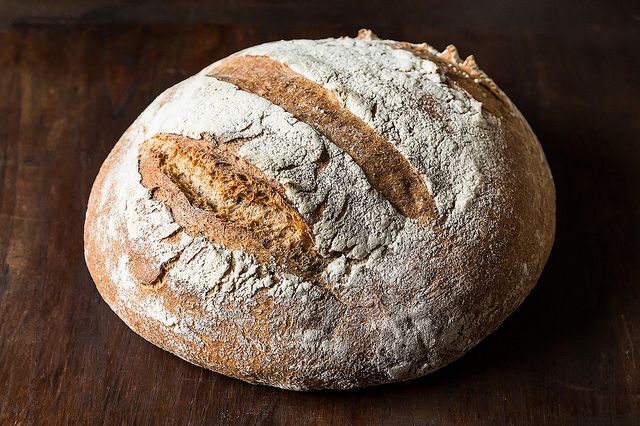
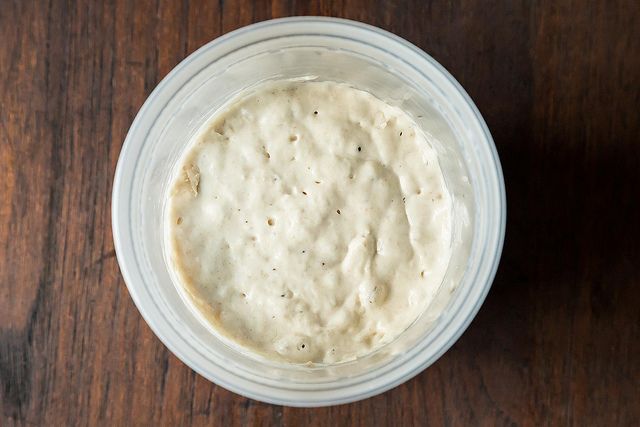

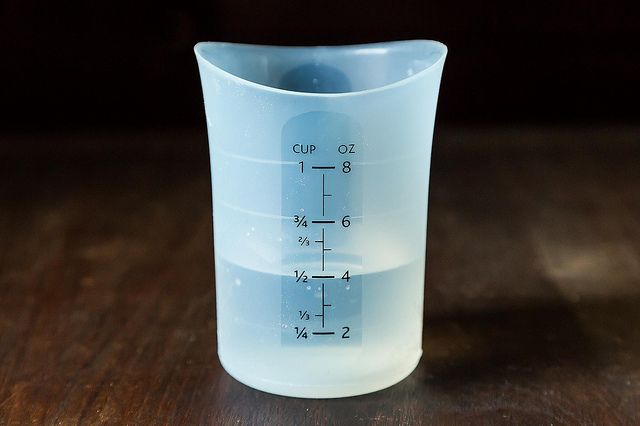
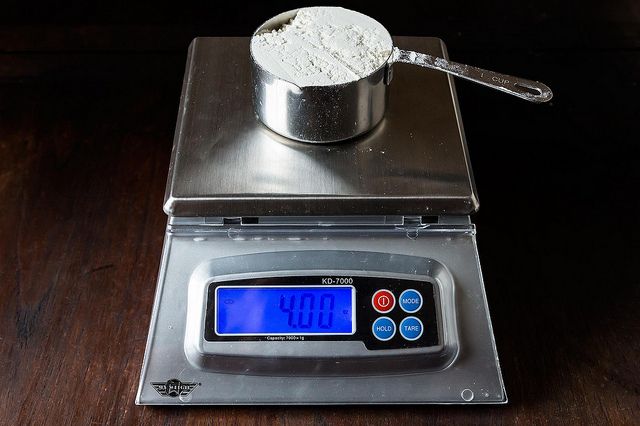
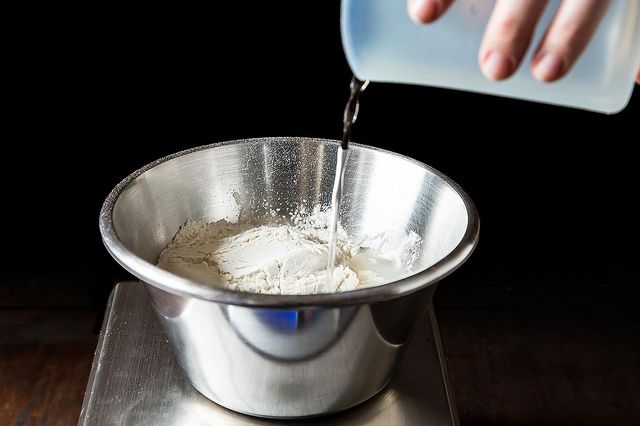
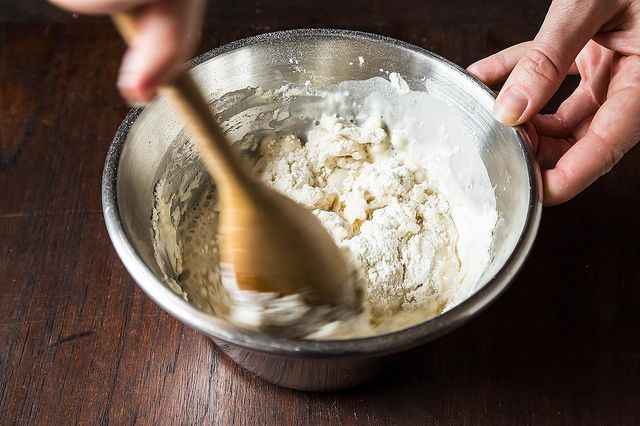


See what other Food52 readers are saying.